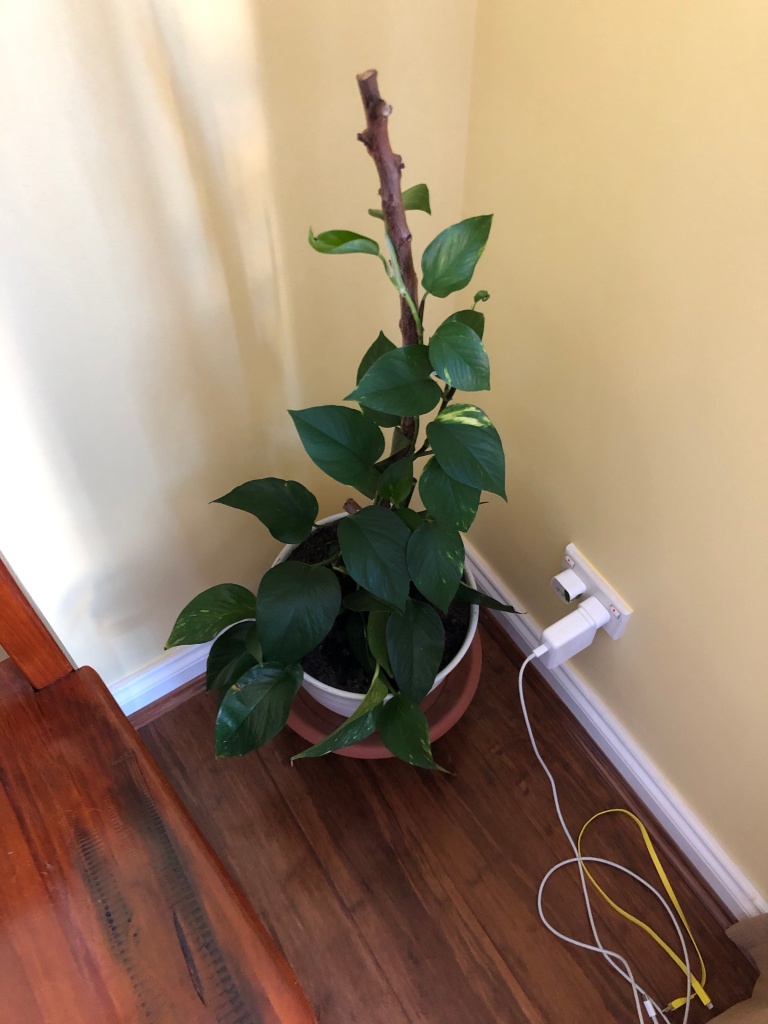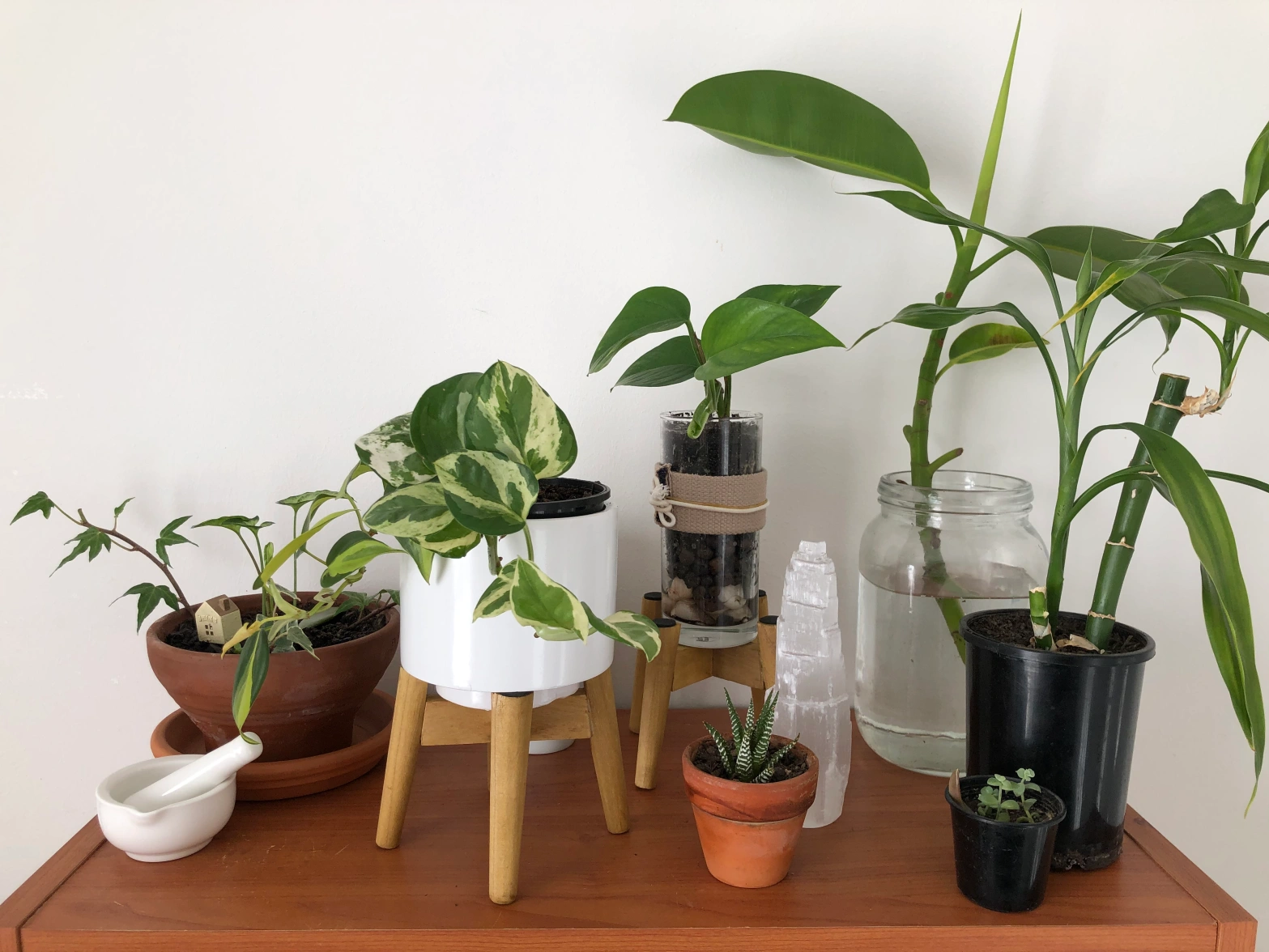
Epipremnum Aureum is a vining aroid also known as Golden Pothos or Devil’s Ivy. It is extremely popular because of how quickly it grows, its ability to survive under most conditions, and its aesthetic appeal. It is a great house plant to gift to beginners, especially since it is so easy to propagate from cuttings. Most people probably have at least one of these in their home at this point, but nonetheless, I’ll be covering how it can best fit into your space, as well as some care instructions.
Is Pothos right for your space?
The answer is yes. Pothos is right for most spaces. In terms of their requirements of your space, they prefer bright indirect light, but will also do well in medium light. In my experience, it will still grow in low light, but it grows significantly more slowly. Placing it in a room with a south, north or east facing window will allow it to grow quite well, provided that it is grown closer to the window in northern or eastern exposures. If grown in a room with a west facing window, ensure that a sheer curtain is used, or that it only received diffused light.
As a design element, large Pothos plants can be placed on a shelf as a hanging element so that they cascade over the side of said shelf. Note that this requires the room to be reasonably well lit. It can also be made to crawl up a stake, pole or trellis. Personally, I like using the branches that I prune off of fruit trees. The irregular shape really adds a rustic flair to your space, but it really depends on what you’re going for.
Smaller plants have a sculptural quality to them. They seem to branch out in a single direction, and defy gravity, refusing to vine and bend downwards under their own weight. If grouped with other plants, I prefer to use many plants, but keep them simple and unified in colour: there’s something appealing about having a small space that is completely overrun with plants, but you certainly don’t want colours to clash.
Note that there are many different varieties of Pothos, each bearing a unique colour, variegation or leaf shape. You can check out some of them here.



How to care for Pothos?
Light: Bright indirect light preferred, but medium light is okay and low light is just enough for your plant to survive.
Watering: These bad boyes are not picky with watering, provided that you allow the roots to acclimate to the soil conditions you’re providing. However, I tend to find that N’Joys (Also known as Snow Queens or Pearl and Jade) are a bit more finnicky. Only water them when they’re truly dry. To test this, stick two segments of your index finger into the soil, and if they feel minimal moisture or complete dryness, then it’s time to water. This is a safe bet. However, if you can manage it, the sweet spot that they like is when the soil is just a little moist all the way through, but never wet. After all, these are plants that grow naturally in rainforests.
Fertilising: I fertilise once a month. Use half the recommended strength to begin with, and slowly work your way up to the full strength.
Propagation: Cut off a section about a centimetre below a node, and put it in water or soil. Interestingly, Pothos cuttings put in water release a natural rooting hormone, helping other plant cuttings that are put in the same water to root more quickly.

One thought on “Epipremnum Aureum (Golden Pothos)”